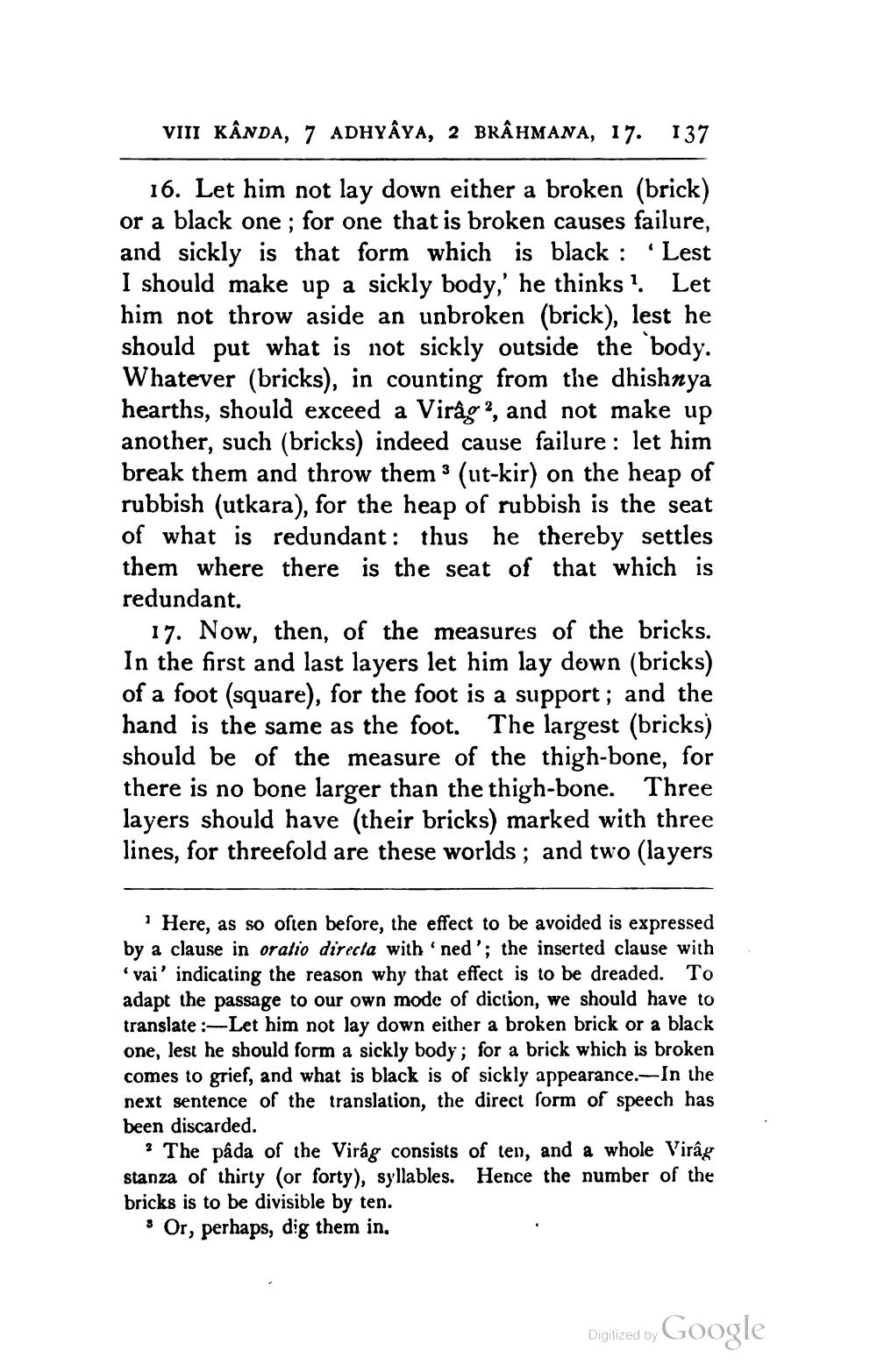________________
VIII KÂNDA, 7 ADHYAYA, 2 BRAHMANA, 17. 137
16. Let him not lay down either a broken (brick) or a black one; for one that is broken causes failure, and sickly is that form which is black: Lest I should make up a sickly body,' he thinks 1. Let him not throw aside an unbroken (brick), lest he should put what is not sickly outside the body. Whatever (bricks), in counting from the dhishnya hearths, should exceed a Virág, and not make up another, such (bricks) indeed cause failure: let him break them and throw them 3 (ut-kir) on the heap of rubbish (utkara), for the heap of rubbish is the seat of what is redundant: thus he thereby settles them where there is the seat of that which is redundant.
17. Now, then, of the measures of the bricks. In the first and last layers let him lay down (bricks) of a foot (square), for the foot is a support; and the hand is the same as the foot. The largest (bricks) should be of the measure of the thigh-bone, for there is no bone larger than the thigh-bone. Three layers should have (their bricks) marked with three lines, for threefold are these worlds; and two (layers
'Here, as so often before, the effect to be avoided is expressed by a clause in oratio directa with 'ned'; the inserted clause with 'vai' indicating the reason why that effect is to be dreaded. To adapt the passage to our own mode of diction, we should have to translate:-Let him not lay down either a broken brick or a black one, lest he should form a sickly body; for a brick which is broken comes to grief, and what is black is of sickly appearance. In the next sentence of the translation, the direct form of speech has been discarded.
2 The pâda of the Virág consists of ten, and a whole Virâg stanza of thirty (or forty), syllables. Hence the number of the bricks is to be divisible by ten.
Or, perhaps, dig them in.
Digitized by
Google




